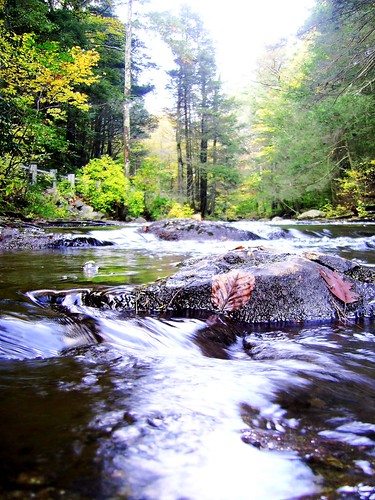Over the past several years we have learned that small groups of people can engage in mass suicide. In 1978, 918 members of the Peoples' Temple led by Jim Jones perished after drinking poisoned koolaid. In 1997, 39 members of the Heaven's Gate cult died after drugging themselves and tieing plastic bags around their heads. Unfortunately, history also demonstrates that it is possible for an entire civilization to commit suicide by intentionally destroying the means of its subsistence.
In the early nineteenth century, the British colonized Southeast Africa. The native Xhosa resisted, but suffered repeated and humiliating defeats at the hands of British military forces. The Xhosa lost their independence and their native land became an English colony. The British adopted a policy of westernizing the Xhosa. They were to be converted to Christianity, and their native culture and religion was to be wiped out. Under the stress of being confronted by a superior and irresistible technology, the Xhosa developed feelings of inadequacy and inferiority. In this climate, a prophet appeared.

In April of 1856, a fifteen-year-old girl named Nongqawuse heard a voice telling her that the Xhosa must kill all their cattle, stop cultivating their fields, and destroy their stores of grain and food. The voice insisted that the Xhosa must also get rid of their hoes, cooking pots, and every utensil necessary for the maintenance of life. Once these things were accomplished, a new day would magically dawn. Everything necessary for life would spring spontaneously from the earth. The dead would be resurrected. The blind would see and the old would have their youth restored. New food and livestock would appear in abundance, spontaneously sprouting from the earth. The British would be swept into the sea, and the Xhosa would be restored to their former glory. What was promised was nothing less than the establishment of paradise on earth.
Nongqawuse told this story to her guardian and uncle, Mhlakaza. At first, the uncle was skeptical. But he became a believer after accompanying his niece to the spot where she heard the voices. Although Mhlakaza heard nothing, he became convinced that Nongqawuse was hearing the voice of her dead father, and that the instructions must be obeyed. Mhlakaza became the chief prophet and leader of the cattle-killing movement.
News of the prophecy spread rapidly, and within a few weeks the Xhosa king, Sarhili, became a convert. He ordered the Xhosa to slaughter their cattle and, in a symbolic act, killed his favorite ox. As the hysteria widened, other Xhosa began to have visions. Some saw shadows of the resurrected dead arising from the sea, standing in rushes on the river bank, or even floating in the air. Everywhere that people looked, they found evidence to support what they desperately wanted to be true.
The believers began their work in earnest. Vast amounts of grain were taken out of storage and scattered on the ground to rot. Cattle were killed so quickly and on such an immense scale that vultures could not entirely devour the rotting flesh. The ultimate number of cattle that the Xhosa slaughtered was 400,000. After killing their livestock, the Xhosa built new, larger kraals to hold the marvelous new beasts that they anticipated would rise out of the earth. The impetus of the movement became irresistible.
The resurrection of the dead was predicted to occur on the full moon of June, 1856. Nothing happened. The chief prophet of the cattle-killing movement, Mhlakaza, moved the date to the full moon of August. But again the prophecy was not fulfilled.

The cattle-killing movement now began to enter a final, deadly phase, which its own internal logic dictated as inevitable. The failure of the prophecies was blamed on the fact that the cattle-killing had not been completed. Most believers had retained a few cattle, chiefly consisting of milk cows that provided an immediate and continuous food supply. Worse yet, there was a minority community of skeptical non-believers who refused to kill their livestock.
The fall planting season came and went. Believers threw their spades into the rivers and did not sow a single seed in the ground. By December of 1856, the Xhosa began to feel the pangs of hunger. They scoured the fields and woods for berries and roots, and attempted to eat bark stripped from trees. Mhlakaza set a new date of December 11 for the fulfillment of the prophecy. When the anticipated event did not occur, unbelievers were blamed.
The resurrection was rescheduled yet again for February 16, 1857, but the believers were again disappointed. Even this late, the average believer still had three or four head of livestock alive. The repeated failure of the prophecies could only mean that the Xhosa had failed to fulfill the necessary requirement of killing every last head of cattle. Now, they finally began to complete the killing process. Not only cattle were slaughtered, but also chickens and goats. Any viable means of sustenance had to be destroyed. Any cattle that might have escaped earlier killing were now slaughtered for food.
Serious famine began in late spring of 1857. All the food was gone. The starving population broke into stables and ate horse food. They gathered bones that had lay bleaching in the sun for years and tried to make soup. They ate grass. Maddened by hunger, some resorted to cannibalism. Weakened by starvation, family members often had to lay and watch dogs devour the corpses of their spouses and children. Those who did not die directly from hunger fell prey to disease. To the end, true believers never renounced their faith. They simply starved to death, blaming the failure of the prophecy on the doubts of non-believers.
By the end of 1858, the Xhosa population had dropped from 105,000 to 26,000. Forty to fifty-thousand people starved to death, and the rest migrated. With Xhosa civilization destroyed, the land was cleared for white settlement. The British found that those Xhosa who survived proved to be docile and useful servants. What the British Empire had been unable to accomplish in more than fifty years of aggressive colonialism, the Xhosa did to themselves in less than two years.
Western civilization now stands on the brink of repeating the experience of the Xhosa. Since the advent of the Industrial Revolution in the late eighteenth century, Europe and North America have enjoyed the greatest prosperity ever known on earth. Life expectancy has doubled. In a little more than two hundred years, every objective measure of human welfare has increased more than in all of previous human history.

But Western Civilization is coasting on an impetus provided by our ancestors. There is scarcely anyone alive in Europe or America today who believes in the superiority of Western society. Guilt and shame hang around our necks like millstones, dragging our emasculated culture to the verge of self-immolation. Whatever faults the British Empire-builders may have had, they were certain of themselves.
Our forefathers built a technological civilization based on energy provided by carbon-based fossil fuels. Without the inexpensive and reliable energy provided by coal, oil, and gas, our civilization would quickly collapse. The prophets of global warming now want us to do precisely that.
Like the prophet Mhlakaza, Al Gore promises that if we stop using carbon-based energy, new energy technologies will magically appear. The laws of physics and chemistry will be repealed by political will power. We will achieve prosperity by destroying the very means by which prosperity is created.
While Western Civilization sits confused, crippled with self-doubt and guilt, the Chinese are rapidly building an energy-intensive technological civilization. They have 2,000 coal-fired power plants, and are currently constructing new ones at the rate of one a week. In China, more people believe in free-market economics than in the US. Our Asian friends are about to be nominated by history as the new torchbearers of human progress.
May 13, 2009
David Deming [send him mail] is associate professor of Arts and Sciences at the University of Oklahoma.
Copyright © 2009 by LewRockwell.com. Permission to reprint in whole or in part is gladly granted, provided full credit is given
More...











 Letters to the Editor and other People Speak
Letters to the Editor and other People Speak
















 Letters to the Editor and other People Speak
Letters to the Editor and other People Speak
